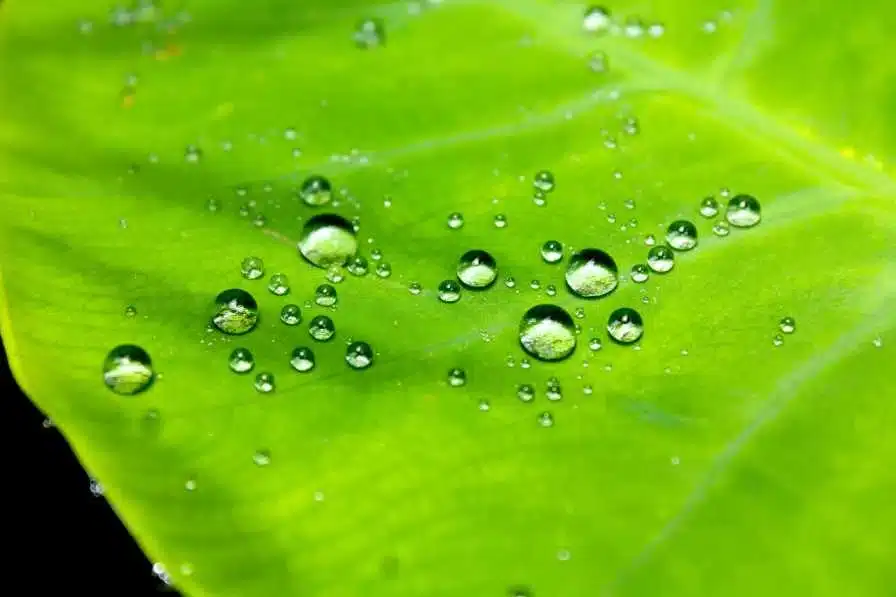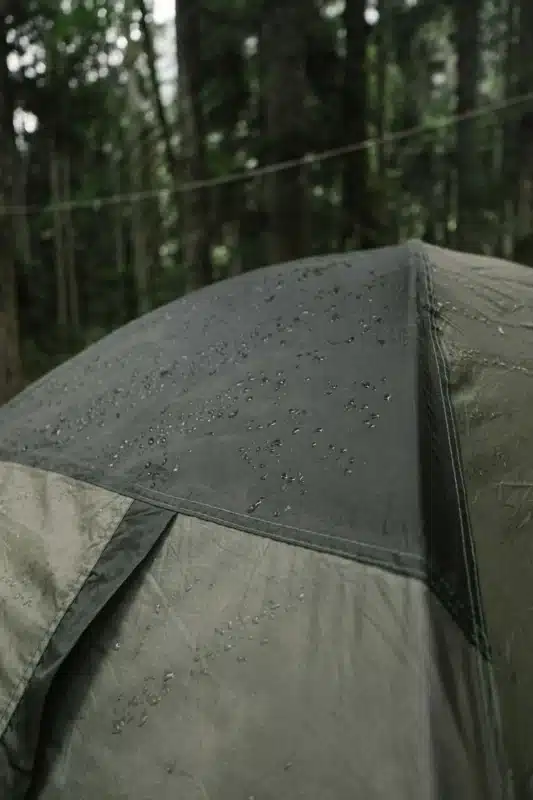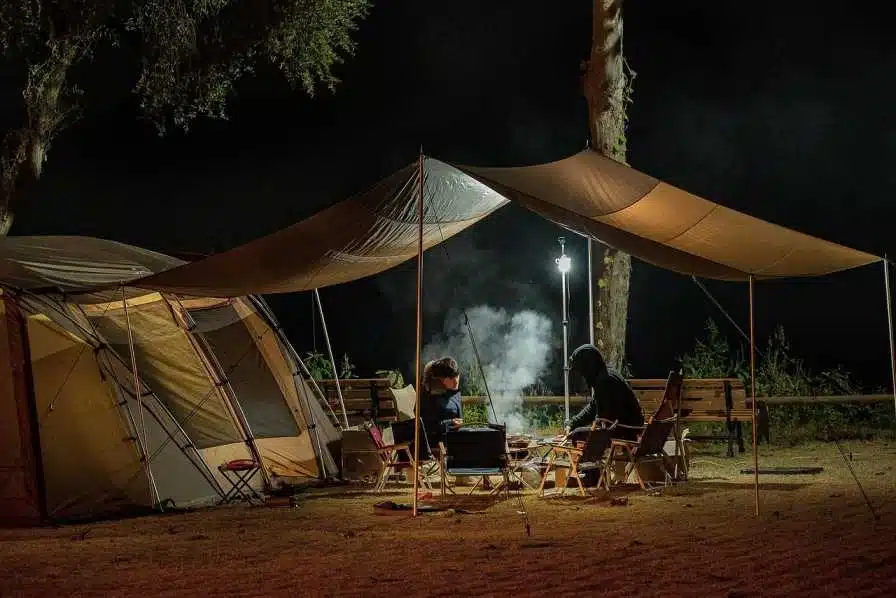There’s nothing worse than waking up in a soaked sleeping bag or watching water drip through your tent seams mid-storm. We’ve been there—multiple times—and after years of trial, error, and a lot of wet gear, we’ve figured out exactly what works.
This guide walks you through proven steps to waterproof your tent properly, whether it’s brand new or starting to leak. From sealing seams to selecting the right spray, you’ll learn how to stay dry, regardless of the forecast.

Are Tents Waterproof by Default? Here’s What to Expect
Not all tents are fully waterproof out of the box. Understanding how factory coatings perform over time helps you avoid unpleasant surprises.
Factory Waterproofing vs Real‑World Performance
Tents often arrive with sealed seams and polyurethane (PU) coatings or durable water‑repellent (DWR) finishes. In controlled conditions, these perform well—for example, rainwater beads off the fly. But real-world factors—extended exposure, abrasion, heat, UV—degrade these layers. Eventually, seams unseal, coatings flake, and fabrics lose repellency.
Why Most Tents Still Need Extra Waterproofing
Factory-applied treatments are designed for initial use only. Seam tape may loosen over time, and coatings can deteriorate with regular use and exposure to the elements. Many campers find that resealing seams every few seasons keeps leaks at bay.

Tent Materials That Affect Waterproofing (And What to Do)
The fabric your tent is made of plays a big role in how waterproof it is and how often it needs maintenance.
Nylon vs Polyester vs Canvas: Key Differences
- Nylon: Light and strong, but loses tension and sags when wet; UV affects it faster.
- Polyester: Less stretchy, holds shape better in rain, UV-resistant; coatings still wear.
- Canvas: Breathable, heavy, needs wax/oil treatment; best for long-term camp setups.
Does Poly Fabric Need Extra Waterproofing?
Yes—though polyester absorbs less water, its coatings degrade similarly. Refresh DWR or PU coatings when water stops beading or fabric looks dull.
How Tent Design Affects Leak Risks
Wider seams, window flaps, vestibule attachments, and floor-wall junctions can leak more easily. Choose designs with taped seams, recessed floors, and covered zippers.
Step-by-Step: Waterproofing Your Tent the Right Way
Waterproofing a tent involves more than just spraying a coating. It’s a four-part process that starts with a clean surface and ends with a thorough check.

Step 1: Clean the Tent Before You Waterproof
Start with a gentle scrub. Use cold water and non-detergent soap. Avoid harsh cleaners—they damage DWR coatings. Let it air-dry completely before proceeding—wet fabric can trap moisture.
Step 2: Apply Seam Sealer to Stitch Lines
Seam sealer essentials: rubbing alcohol and a sealer matched to your fabric—PU versus silicone-treated. Most tents are PU-coated; confirm with the manufacturer.
- If existing tape is peeling, remove it and clean residue with alcohol.
- Apply fresh sealer to all seams, even intact ones—it prevents future leaks.
- Let it cure thoroughly—24 hours is usually enough.
Step 3: Use Tent Waterproofing Spray on Rainfly and Fabric
Choose a spray compatible with your fabric type. For PU-coated polyester or nylon, use PU-specific treatments. For silicone-coated nylon, choose silicone sprays. Apply evenly and follow product instructions closely.
Step 4: Let It Dry & Test the Results
Allow 24 hours of drying. After that, set your tent up or run a hose over it to check for leaks. Fix issues promptly to avoid surprise drips during your trip.
How to Waterproof a Canvas Tent (Compared to Nylon or Poly)
Canvas tents need a different treatment approach than synthetic fabrics. They require breathable yet water-blocking coatings that last through seasonal use.

Why Canvas Requires a Different Approach
Canvas (typically cotton or poly-cotton) is breathable and durable but not inherently waterproof. Its fibers absorb moisture unless treated. Unlike nylon/poly with factory coatings, canvas needs periodic wax or oil-based treatments.
Recommended Canvas Waterproofing Products
- Traditional mixtures: beeswax plus linseed oil (melted and brushed on).
- Modern options: specialized canvas treatments like Otter Wax or Flame kits.
Drying and Reapplying Canvas Coatings
Allow treated canvas to dry for several days in ventilated space. Reapply treatments yearly or if water begins to soak in. Avoid storing when damp—aim for clean, dry, breathable folds.
How to Re-Waterproof a Tent That’s No Longer Rainproof
If your tent used to keep water out but now leaks, it’s time for reproofing. Here’s how to check and restore its performance.

Step 1: Test If Your Tent Is Still Waterproof
Set it up in your yard and simulate rain with a hose. Take note of any drips, damp spots, or water pooling within the tent.
Step 2: Look for Signs That Waterproofing Has Worn Off
Check for these signs:
- Blotchy fabric with poor beading
- Sticky or flaky PU on the floor or fly’s underside
- Delaminated seam tape or visible needle holes
Step 3: Decide Between a Quick Touch-Up or Full Reproof
If only seams or small areas fail, apply targeted seam sealer or spot-spray waterproofing. If multiple areas or large sections are compromised, re-clean and reapply both sealer and fabric treatment across the whole tent.
Step 4: Repeat Seam Sealing and Spray Application as Needed
Reapply seam sealer where needed. Respray the fly and outer walls; inspect after drying. For DIY full recoats on silicone-treated materials, a silicone-and-mineral-spirits mixture is effective.
Waterproof Tent Accessories You Should Use
Accessories can make a huge difference in how well your tent holds up to rain. These additions act as external protection layers.
Rainfly
A well-designed fly extends past walls, safeguarding zipped seams and fabric under stress.
Tent Footprint (Groundsheet)
Use a footprint slightly smaller than the tent base to prevent water ingress from pooled sides.
Tarp or Canopy
Add an overhead tarp above your fly to divert heavy rain or protect against UV.

Seam Sealer (Tape or Liquid)
Keep both liquid sealers and tape on hand for patching mid-trip or between seasons.
Bonus Pro Tip: DIY Waterproofing Hacks That Actually Work
Many seasoned campers experiment with their own waterproofing methods — and some of them really hold up. For example:
- Silicone + Mineral Spirits Mixture: Blending these into a paintable solution and applying it directly to seams is a favorite among ultralight backpackers. It’s especially useful for silicone-coated tents (often labeled as “silnylon”).
- Scotchguard Spray + Wax Seal: Some users combine commercial spray with wax rubbed over seams — such as from a plain candlestick — to reinforce aging sealant or prep for heavy rain.
While these aren’t official manufacturer-recommended techniques, they’ve been field-tested by experienced campers looking to stretch their gear’s lifespan.
Final Advice
Routine care keeps tents dependable. Clean after muddy trips, reseal seams yearly, recap DWR, and protect with accessories like fly tarps and footprints. When severe leaks appear or coatings flake, don’t delay—address it before your next adventure.
How to Waterproof a Tent – FAQs
Get answers to common questions campers have about tent waterproofing.
How to waterproof a tent?
Clean it, seal the seams, spray with waterproof coating, and dry fully before testing.
How to waterproof a tent DIY?
Use rubbing alcohol, seam sealer, and waterproof spray. Let it cure overnight.
How to re-waterproof a tent after it starts leaking?
Inspect for damage, re-seal seams, and apply spray again over the outer fabric.
Are tents waterproof by default or do they need treatment?
Most tents are factory-sealed but lose waterproofing over time. Always test and treat before wet-weather trips.
How do I make fabric waterproof at home?
Natural Method:
- Mix linseed oil and beeswax 1:1.
- Heat until melted.
- Brush onto fabric and let cure several days in a dry space.
What is tenting and does it relate to waterproofing?
Tenting = living temporarily in shelters outdoors. Waterproofing makes tenting more comfortable and safe in wet weather.
Is poly waterproof enough for tent materials?
Polyester is water-resistant but still benefits from spray coatings—especially after extended UV exposure.
What is a good waterproof for a tent?
Look for sprays with silicone or polyurethane bases. Seam sealers should match your tent’s coating type.
How to prevent moisture inside a tent?
Ventilation is key.
- Open vents/windows.
- Store gear outside.
- Avoid sleeping near water sources.
- Never cook inside.
How to avoid moisture in your tent?
Try this checklist:
- Ventilate
- Store wet gear outside
- Camp away from lakes
- Use a larger tent
- Don’t touch tent walls
- Never cook inside
- Pick breezy spots
- Camp on dry, elevated ground
What can I put over my tent to make it waterproof?
Use a rainfly, tarp, or additional canopy. You can also apply a silicone-based spray over the outer tent fabric.
Do all tents leak in heavy rain?
Not all — but many do if they’re old, poorly set up, or not maintained. Seam sealing and proper pitch prevent most leaks.
How to protect the bottom of a tent from rain?
Use a footprint or tarp underneath the tent, cut slightly smaller than the base to prevent water pooling.
Why do tents have two layers?
To improve waterproofing and airflow. The rainfly keeps water out while the inner layer minimizes condensation.
Can you waterproof a cheap tent?
Yes — use seam sealer, waterproofing spray, and a tarp or rainfly for added protection.
How to dry a large tent overnight?
Hang it in a ventilated area or over a fence with the rainfly removed. Use towels to blot interior moisture. Avoid packing wet.




 VEVOR
VEVOR FlashFish
FlashFish GoFort
GoFort OutSunny
OutSunny ANTARCTICA Gear
ANTARCTICA Gear
